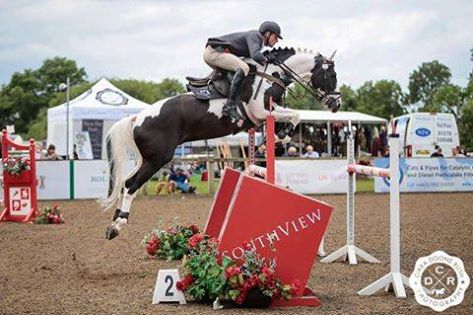Pigeon Fever in Horses: Manifestations and Complications
Though it has many aliases--including pigeon fever, dryland distemper, and false strangles--and can look gruesome on the surface, a normal infection caused by Corynebacterium pseudotuberculosis is relatively easy to treat. Treating an infection that's developed complications, however, is a more challenging task for veterinarians. At the 2011 America College of Veterinary Internal Medicine Forum, held June 15-18 in Denver, Colo., Lutz Goehring, DVM, MS, PhD, Dipl. ACVIM, assistant professor of equine medicine at Colorado State University's College of Veterinary Medicine and Biomedical Science, presented on common complications associated with pigeon fever.Traditionally pigeon fever has been most common in the western United States, but has slowly spread east over the years. An affected horse generally forms external abscesses, particularly in the pectoral area (hence, the name pigeon fever), around the head, and in the udder or sheath areas.
Goehring explained that pigeon fever is typically contracted through skin abrasions or contact with contaminated soil. Insect vectors--such as horn or stable flies--are also common means of passing infection.
Goehring stated that when diagnosing C. pseudotuberculosis infections, veterinarians first try to localize the location of the abscess (if not visible on the horse's body) using a variety of procedures including rectal exam, abdominal tap, auscultation (listening with a stethoscope) of heart and lungs, abdominal or thoracic (chest) ultrasound and/or radiology, needle aspirate with culture and cytology, blood cultures, and specific laboratory and titer testing. Additionally, it's important to rule out other diseases that pose a similar clinical picture and blood profiles, such as Streptococcus equi, equine infectious anemia, lymphoma, or even a foreign body abscess.
In the majority of pigeon fever cases (about 90%), abscesses form externally and fill with a purulent (pus) material. Treatment is relatively easy: Lance and drain the abscess, and practice good hygiene to avoid further infection. Goehring noted that veterinarians and owners should pay special attention to the disposal of the waste material to limit the risk of infecting other horses on a property (the bacterium is very hardy and can survive in soil).
"Use of antimicrobials in the external abscess cases is discouraged," Goehring explained, although veterinarians sometimes administer low doses of the non-steroidal anti-inflammatory drugs phenylbutazone (Bute) or flunixin meglumine (Banamine) if the patient appears to be in severe pain.
As with most equine ailments, complications aren't unheard of in horses with C. pseudotuberculosis infections, occurring about 10% of the time; common complications veterinarians encounter include internal abscesses, ulcerative lymphangitis (sometimes referred to as elephant leg), weight loss, poor appetite, fever, and ill thrift. A physical exam and blood work will often reveal typical signs of chronic active inflammation, including anemia, elevated fibrinogen levels, increased total protein attributable to elevated globulin, and high white blood cell counts (all of which point to chronic inflammation or infection). Although the liver generally isn't directly affected, Goehring noted that it's not uncommon to see moderate elevated liver enzymes with this disease.
Researchers have reported that horses with internal abscesses and ulcerative lymphangitis--which are commonly treated in the same manner as external abscesses--don't typically respond as well to treatment as these infections are often chronic in nature.
Goehring noted that only in complicated cases should veterinarians use antimicrobials to treat internal abscesses. The intracellular presence of this bacteria and thick abscess walls limit antibiotic penetration, so their usefulness is often a point of contention. When possible, veterinarians often turn to drainage or surgical removal of an internal abscess to improve antibiotic effect.
There are several drugs proven effective in treating C. pseudotuberculosis infection including doxycyline combined with rifampin. Goehring noted that these medications are generally administered until achieving a normal complete blood and fibrinogen count, or until complete resolution of the illness; however, each veterinarian will determine the best course of action for each individual case of pigeon fever.
British Show Jumping Equestrian Clearance - Elegant Show Jackets Pictures | British Show Jumping Equestrian Clearance - Custom Printed Equestrian Clothing Pictures | Show Jumping | Selle Francais | Horse Show Jumping | Edward Gal | British Show Jumping Equestrian Clearance - Equestrian Clothes - Jodhpurs









